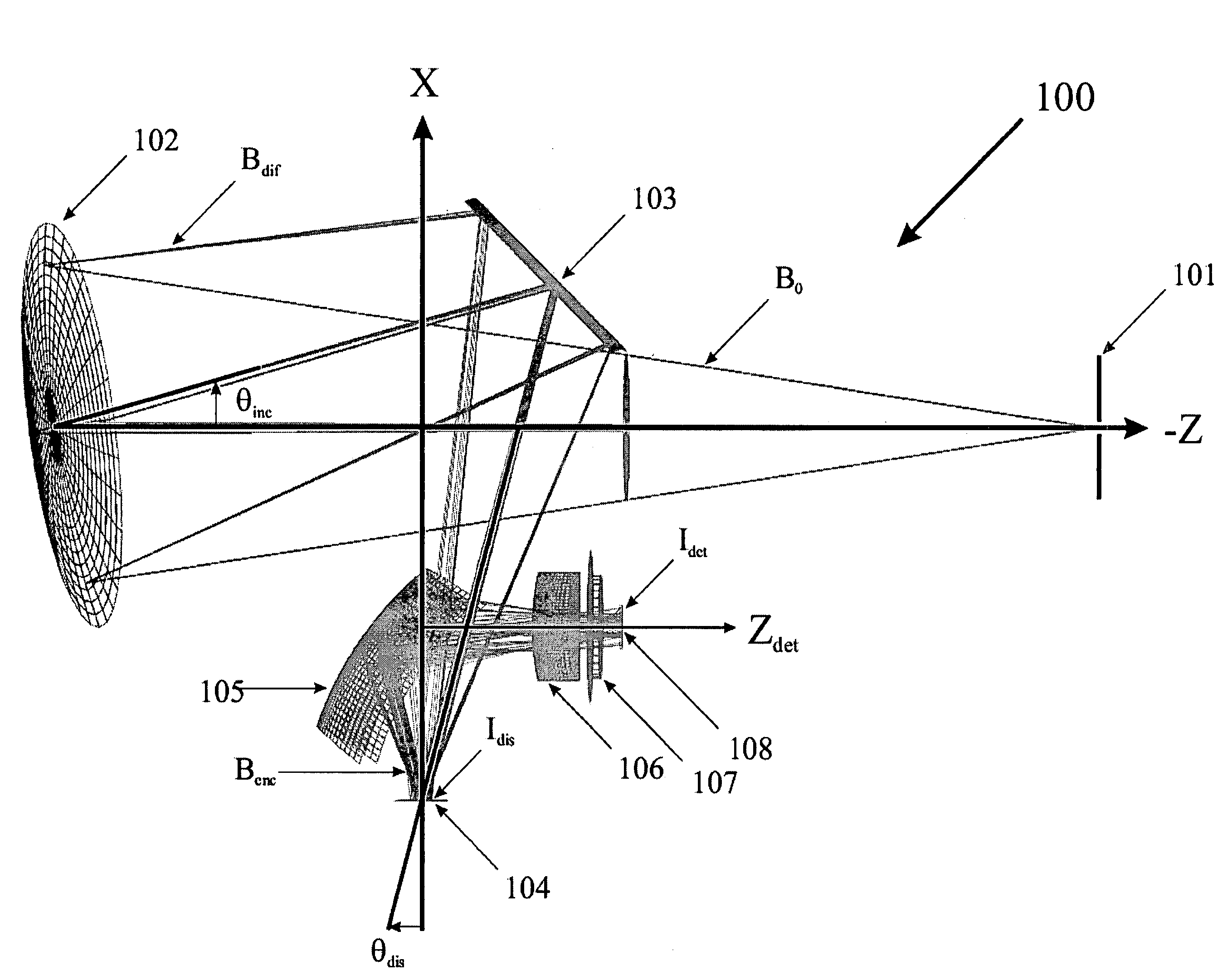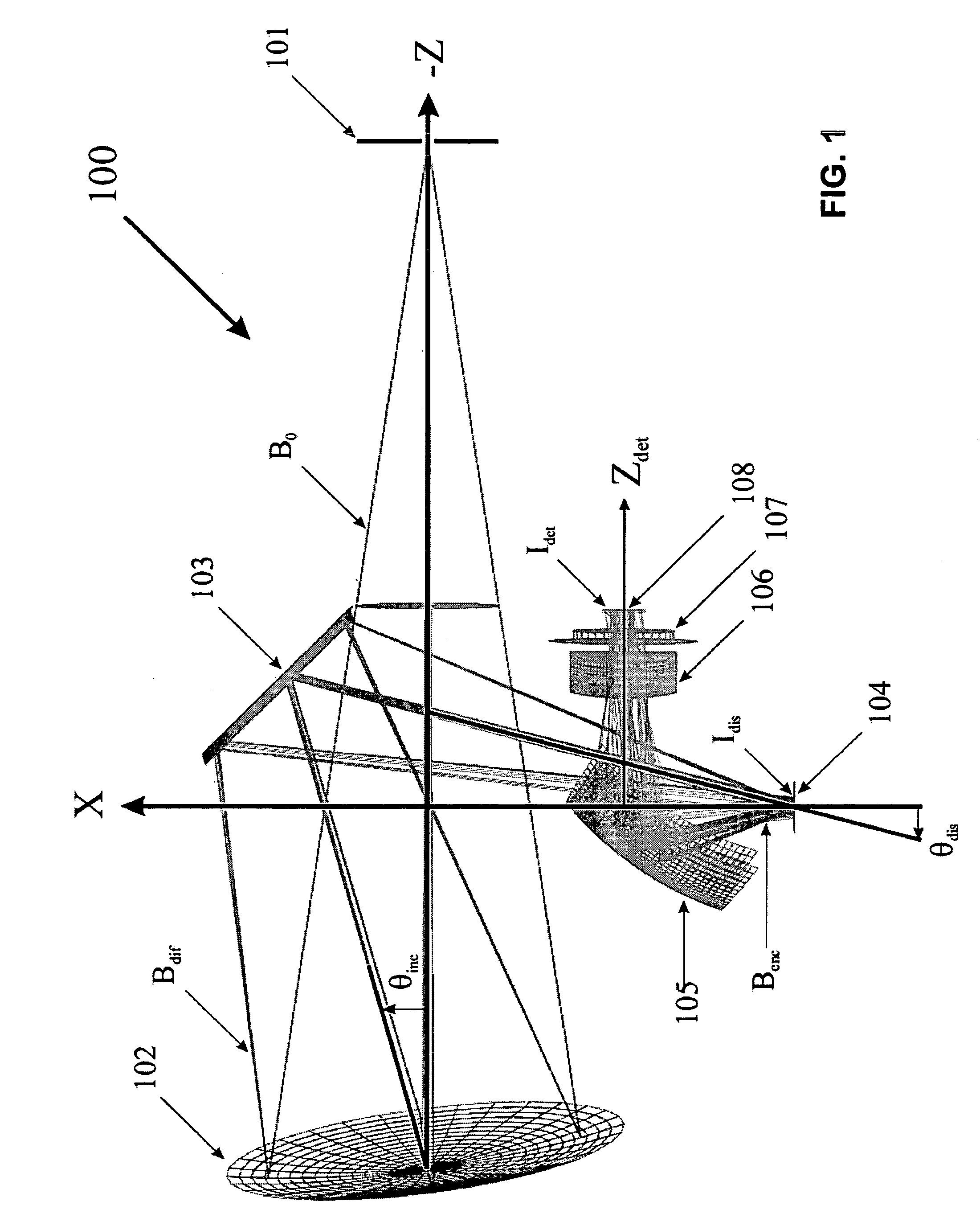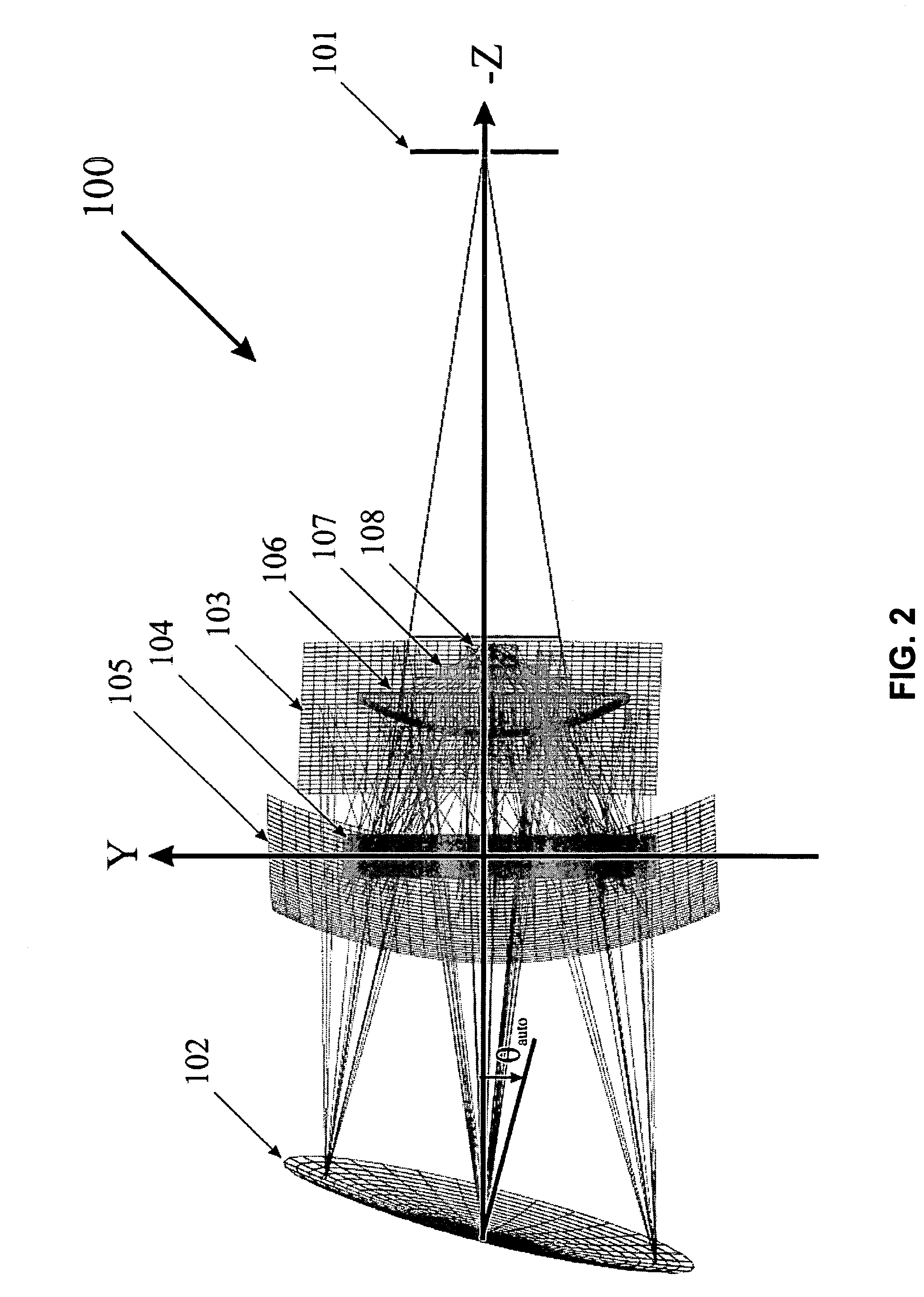Encoder spectrograph for analyzing radiation using spatial modulation of radiation dispersed by wavelength
a spatial modulation and encoder technology, applied in the field of radiation spectrum analyzers and radiation image analyzers, can solve the problems of reducing the photometric accuracy of these instruments, reducing increasing the cost of encoders, etc., to achieve the effect of increasing the symmetry of the optics system, high compact encoder design, and small siz
- Summary
- Abstract
- Description
- Claims
- Application Information
AI Technical Summary
Benefits of technology
Problems solved by technology
Method used
Image
Examples
Embodiment Construction
[0024]Disclosed herein are embodiments of an encoder spectrograph and related systems, subsystems, and applications for analyzing radiation from a sample. In various embodiments, an encoder spectrograph uses a spatial light modulator to encode dispersed radiation. The spatial light modulator for the encoder spectrograph may be implemented by a reflective modulator disc having a pattern of radiation intensity filters. Generally, embodiments of radiation analyzers and encoders that use spatial modulation of radiation dispersed by wavelength are described in U.S. Pat. No. 6,271,917, U.S. patent application Ser. No. 09 / 848,614, and U.S. patent application Ser. No. 10 / 384,374, each of which is incorporated by reference in its entirety. In one embodiment in accordance with the present invention, an encoder spectrograph comprises a Littrow-mount double-crossover optical system, which provides a number of advantages over previous designs.
Optical System for Encoder Spectrograph
[0025]FIG. 1 i...
PUM
| Property | Measurement | Unit |
|---|---|---|
| illuminated diameter | aaaaa | aaaaa |
| illuminated diameter | aaaaa | aaaaa |
| inclination angle θinc | aaaaa | aaaaa |
Abstract
Description
Claims
Application Information
 Login to View More
Login to View More - R&D
- Intellectual Property
- Life Sciences
- Materials
- Tech Scout
- Unparalleled Data Quality
- Higher Quality Content
- 60% Fewer Hallucinations
Browse by: Latest US Patents, China's latest patents, Technical Efficacy Thesaurus, Application Domain, Technology Topic, Popular Technical Reports.
© 2025 PatSnap. All rights reserved.Legal|Privacy policy|Modern Slavery Act Transparency Statement|Sitemap|About US| Contact US: help@patsnap.com



